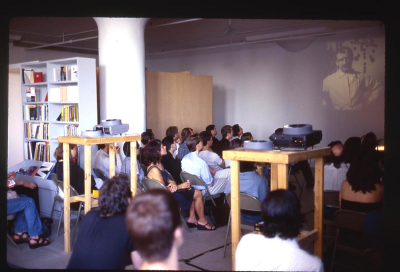
The Bookshop Piece
1996
Museum Boijmans Van Beuningen
Rotterdam
The Bookshop Piece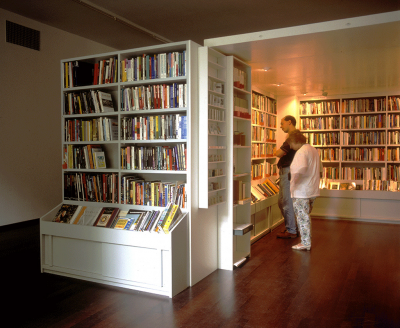
The Bookshop Piece is a recreation of the theory section of the ICA Bookshop (London), made in collaboration with Peter Fillingham.
It creates an access for the public to titles such as available at the ICA. The stock covers a wide range of relevant titles in art and related theory (sociological, cultural, historical, philosophical works), and creates a relationship between, and an underlayment to the different collections of the museum.
Concentrated in its form, the piece functions as a compact 'machine' with a lot of content and consistence. Albeit the compactness, the content spreads beyond its literal borders, and in fact, makes vast inroads into diverse contemporary cultural issues. The Bookshop Piece creates a specific and important line of access to cultural theory, catalyzing - by direct availability- the possibility of critical thought inside the same arena where art is presented.
The Bookshop Piece creates a specific and important line of access to cultural theory and contemporary cultural issues, catalyzing - by direct availability- the possibility of critical thought inside the same arena where art is presented.
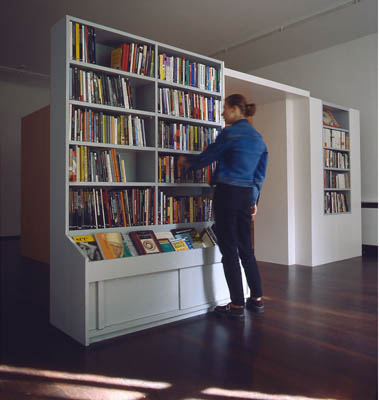 frontside
frontside
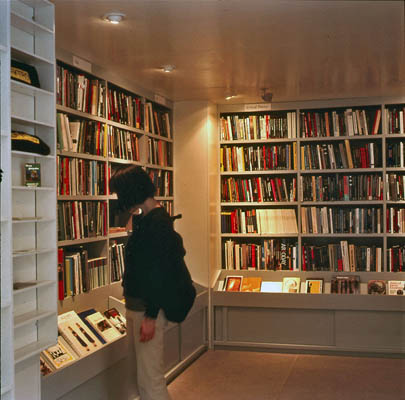 interior
interior
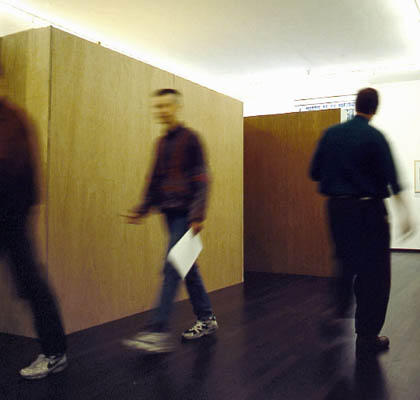 backside
backside
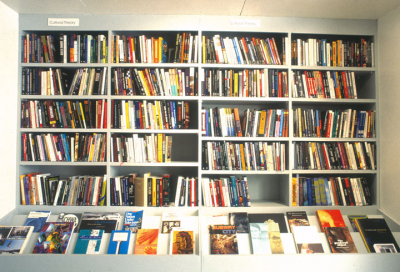

The Bookshop Piece
1998
gallery Greene Naftali
New York
The Bookshop Piece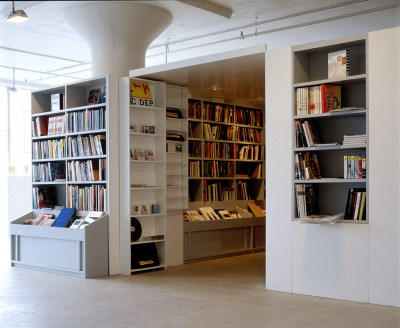
In 1998, The Bookshop Piece was activated at gallery Greene Naftali in New York.
For this new situation, the stock was completely actualised and critically reconfigured in close collaboration with gallerist Carol Greene and the US based publishers and distributors.
The Bookshop Piece for gallery Greene Naftali foregrounds even more the fabric of social relations and exchanges, which occur in the realization of the project. The artists, publishers and gallery staff participated in a collaborative process, working intensively together to rework and adjust the stock for this specific situation, which invited the audience to participate as a viewer, consumer or browser.
Questions of the public sphere enter through the architectural and sculptural displacement of one's institution's bookstore into another institution's exhibition space. This intersection raises questions particular to an American context where the space between the gallery and the museum is shrinking and the role of the institution as an entertainment venue is supported by the museum cafe and store.
